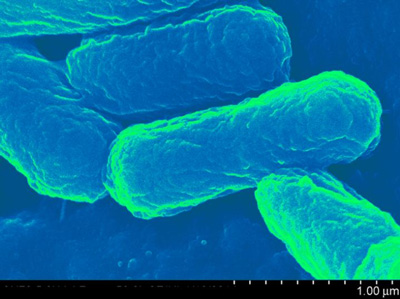E-coli used as a transport capsule for pneumococcal disease vaccine
Posted: 1 July 2016 | Victoria White, Digital Content Producer | No comments yet
Researchers have developed an E. coli-based transport capsule designed to help next-generation vaccines do a more effective job than today’s immunisations…


The core of the capsule is harmless E. coli. CREDIT: University of Buffalo
Researchers experimenting with harmless strains of E. coli have developed an E. coli-based transport capsule designed to help next-generation vaccines do a more efficient and effective job than today’s immunisations.
The researchers have shown that the capsules are successful in fighting pneumococcal disease.
“It’s a bit counterintuitive given what you here about E. coli, but there are many strains of the bacteria, most of which are perfectly normal in the body that have great potential to fight disease,” said Blaine A. Pfeifer, PhD, associate professor of chemical and biological engineering in the University at Buffalo School of Engineering and Applied Sciences.
Pfeifer’s former student, Charles H. Jones, PhD, is leading efforts to commercialise the biotechnology as CEO and founder of startup Abcombi Biosciences.
The core of the capsule is E. coli. Around the bacteria, the researchers wrapped a synthetic polymer – called poly (beta amino ester) – like a chain link fence. The positive-charged polymer, combined with the negative-charged bacteria cell wall, create a sort of hybrid capsule.
“Impressive” results in mice
To test the capsule, the researchers then inserted a protein-based vaccine, also being commercialised by Abcombi, designed to fight pneumococcal disease. The results, when tested in mice, were impressive.


Here is a rendering of how the synthetic polymer — called poly (beta amino ester) wraps around the E. coli-based core creating a sort of hybrid capsule. CREDIT: University of Buffalo
The capsule’s hybrid design provided both passive and active targeting of specific immune cells called antigen-presenting cells that trigger an immune response. It also provided natural and multicomponent adjuvant properties, which enhance the body’s immune response, and dual intracellular delivery mechanisms to direct a particular immune response. The capsule enabled simultaneous production and delivery of the components (antigens) required for a vaccine and resulted in strong vaccination protection capabilities against pneumococcal disease.
The researchers say that the capsules are relatively inexpensive to create and flexible in terms of use. For example, they say the capsule could be used as a delivery device for therapies that target cancer, viral-based infectious disease and other illnesses.
Related topics
Drug Delivery, Vaccine
Related organisations
University of Buffalo








